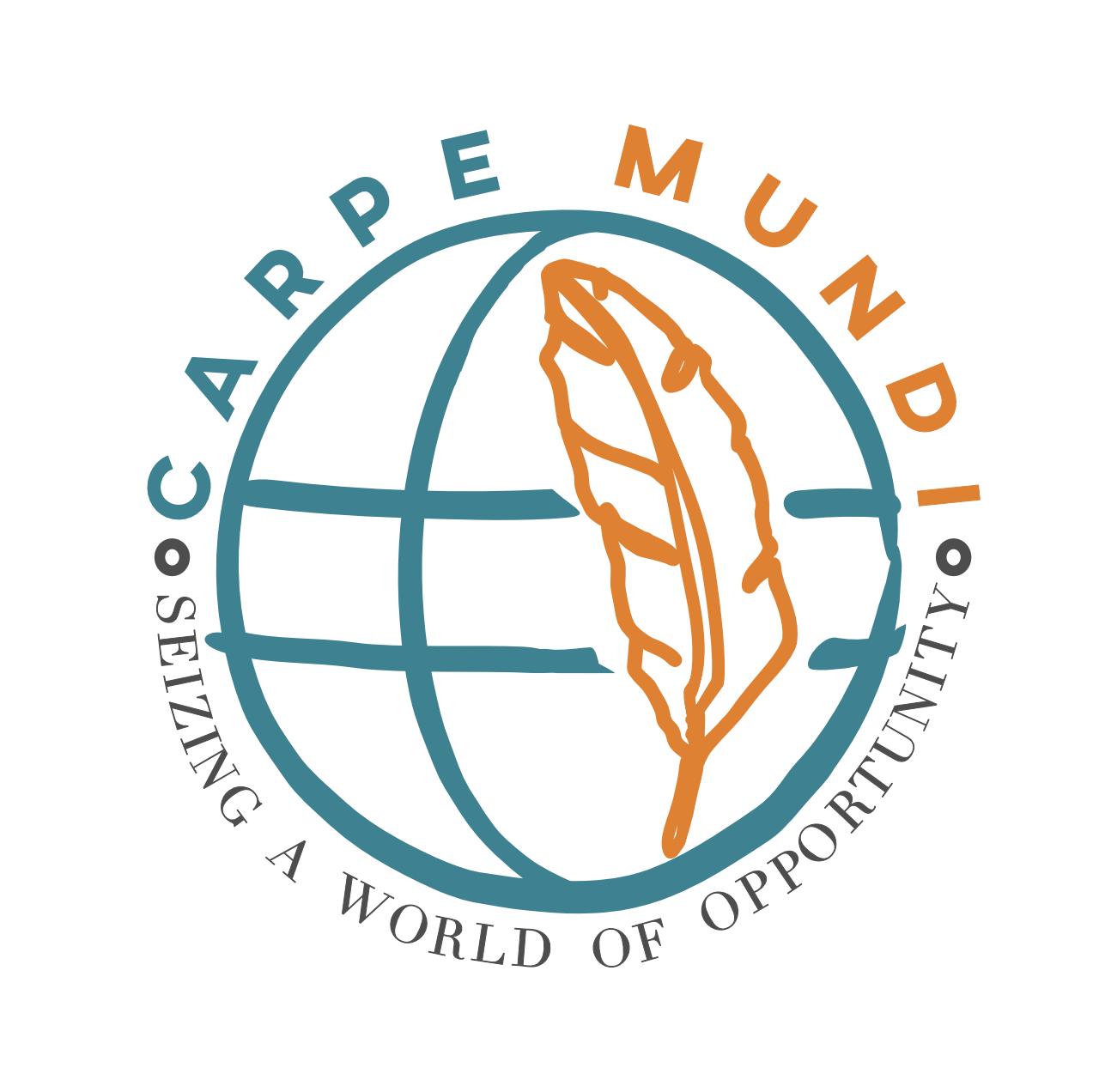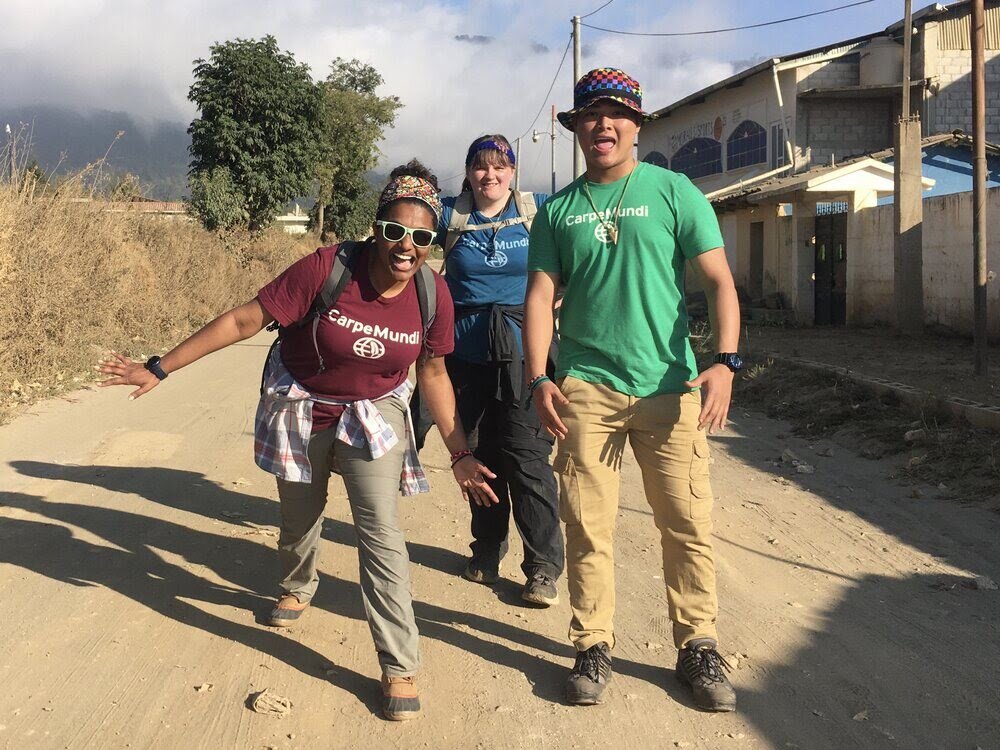BEFORE I APPLY & ELIGIBILITY
How much does it cost to apply?
Nothing! There is no application fee. It is completely free.
How do I determine if I’m a first-generation college student?
If your parents or guardians didn’t receive a college degree, and you are pursuing a college degree, you are a first-generation college student.
Do I need to have travel documents (passport, visa) before I apply?
Short answer: no.
Long answer: If you do not already have a passport, Carpe Mundi will help you apply for a passport once you’re accepted. We will also help you apply for a visa(s) (government-issued document authorizing travel), if one is required for the countries you’re traveling to. A new US passport costs $145, and each student is responsible for paying for their own passport.
Should I apply if I’m in my second or third year of college?
Short answer: Second year, maybe. Third year, probably not.
Long answer: Because the courses you will take through Carpe Mundi while abroad are best applied towards general ed credits, we have found Carpe Mundi to be most appropriate and effective for students who will be in their first or second year of college during the program. We want to make sure studying abroad will contribute to your degree requirements and keep you on track to graduate on time.
Do any of the regions have language requisites?
Short answer: no.
Long answer: All of our programs have a language-learning component which are designed to accommodate introductory-level learners. You do not need any experience in the language to be on our programs as you will take classes once you get there. For example, students on the Southeast Asia program will study Thai.
How will our region of travel be decided?
Carpe Mundi will do our best to accommodate your regional preferences and most students end up traveling to their first or second choice region (as indicated on your application). We cannot guarantee that you will travel to a specific region, because our trips are capped at 12 students per program and sometimes we have to shuffle students around according to: what programs have high or low enrollment, safety concerns, and other logistical considerations. As a reminder, Carpe Mundi students can choose to travel to India, Southeast Asia, Senegal, South America, or Central America. As we do admissions on a rolling basis, we try our hardest to prioritize regional preferences for students who submit their application early. The sooner you apply, the higher your odds of getting your first or second travel location.
How long is your application?
Our application should not take that long, but you can click here to preview it.
What’s the difference between Carpe College and PDXchange?
Program costs
How do I know if I’m eligible for the Pell Grant?
In order to know if you are eligible for the Pell Grant, you first have to complete your FAFSA for the upcoming school year. Once you’ve completed your FAFSA, your Student Aid Report (SAR) will indicate if you are eligible for a Pell Grant.
What is my Student Aid Report and how do I get it?
In order to receive financial aid for college or graduate school, you must submit your FAFSA (Free Application for Federal Student Aid). After you submit your FAFSA, you will receive your Student Aid Report (SAR).
Not sure what your SAR is? You can find it by logging into your FAFSA, click on the 2023-2024 tab, and scroll down to View or Print your Student Aid Report (SAR).
Once you have the document up, you can take a picture of it, take a screenshot of it, or save it as a PDF, and upload it to your application. We only need the first page.
Having trouble with your FAFSA? Give us a call. Alternatively, most schools have a financial aid counselor you can reach out to, or ask a teacher for help.
3. What do the program costs cover?
While you travel with Carpe Mundi, all of your expenses will be covered once the overseas program begins. This includes accommodation, food, transportation, and all activities. Generally students don't need to carry more than $200-400 in pocket money to spend on non-essentials, such as souvenirs or treats/desserts/snacks.
4. What is the cost of participating in Carpe Mundi?
Short answer: it depends on your scholarships.
Long answer: Carpe Mundi costs vary from student to student, depending on travel location and plane ticket costs. If you apply and are accepted for an interview, part of your interview process will be going over what costs could look like for you. Here’s our best explanation for how Carpe Mundi works:
Carpe Mundi partners with Carpe Diem Education (CDE) or Where There Be Dragons (WTBD) to administer overseas travel. CDE and WTBD are study abroad and gap year organizations that work with students from all over the country. A typical, full-paying student will pay around $15,000 - $20,000. CDE and W TBD recognize that this cost is inaccessible to a lot of students, and therefore offers all Carpe Mundi students a scholarship in the form of a discount. Therefore, a Carpe Mundi student’s overall cost is closer to $7500-$8500 - almost cut in half.
Carpe Mundi will then cover, at minimum, the equivalent of two terms worth of your financial aid, and potentially more. That means that most students will have a balance between $2000 to $2500.
Carpe Mundi also helps each student apply for a minimum of one large scholarship. We put a lot of emphasis on the Gilman Scholarship through the State Department and provide each student with intensive support for the application. If a student receives an additional scholarship, it could range from $1500 - $4500, which could potentially cover a student’s out of pocket cost, or even help a student pocket extra money. Historically, around 50% of our students receive an additional scholarship.
Carpe Mundi works with each student to develop an individual payment plan, and helps with other methods of financing the program. Other ways that students have covered their balance include using their fall refund from PCC, saving up money over the course of the year from work, and asking for scholarships or support from other family members or businesses. Carpe Mundi also allows students to leave for their travels with a small balance, meaning that not all of the money has to be paid before a student leaves, as long as a plan is in place for payment upon return from travel.
College Credits & Admissions
If I am NOT planning on attending Portland State University, Portland Community College, Mt. Hood Community College, or Clackamas Community College, can I still be a part of Carpe Mundi?
Short answer: no.
Long answer: Since a significant component of Carpe Mundi is months of in-person mentorship and group cohort meetings in Portland before and after travel, this program is not designed to support students from schools across the state or country, since they would not be able to be there in person.
Once I return from studying abroad, can I transfer to other universities?
Short answer: yes.
Long answer: Once you return from studying abroad and complete your coursework to earn college credit from the University of Montana, you can continue your studies at PCC, move to PSU, or transfer to other universities. We have had students transfer to Lewis & Clark College, University of Oregon, Pacific University, Boise State University, and more!
Ready to apply?


